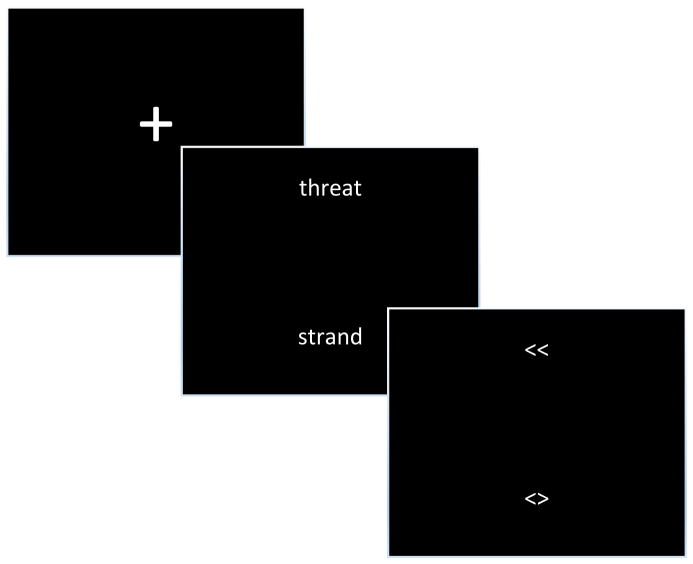Figure 2.
General dot probe task example. A fixation cross (upper left) is replaced by two stimuli, here toward the top and bottom of the screen. The stimuli are then replaced by the probe. Here, the participant must find the probe that represents two arrows pointing in the same direction and respond with the left button. Among the many variations in the literature include the stimuli (e.g., faces, among other pictures), the type of probe (e.g., E versus F; a simple dot), and whether participants have to discriminate between the probe and a distractor (here, ≪ is the probe and <> is a distractor; in some studies there is no distractor).

